Overview
The article delineates five pivotal pricing strategies for equipment manufacturers aiming to enhance profitability:
- Cost-plus
- Value-based
- Competitive
- Dynamic
- Psychological pricing
It underscores that by comprehensively understanding cost structures, meticulously analyzing competitor pricing, and strategically utilizing psychological tactics, manufacturers can adeptly tailor their pricing strategies to align with market demands and significantly improve their financial outcomes.
Introduction
In the fiercely competitive realm of equipment manufacturing, pricing strategies can be the defining factor between profit and loss. Manufacturers grapple with the intricate balance of cost structures, customer perceptions, and market dynamics to optimize their pricing and enhance profitability. This article explores five innovative strategies that not only address these complexities but also empower producers to navigate the intricacies of pricing effectively.
How can equipment manufacturers leverage these strategies to not only survive but thrive in an ever-evolving marketplace?
Define Effective Pricing Strategies for Equipment Manufacturing
In the competitive landscape of equipment production, effective strategies pricing are paramount. Producers must navigate the complexities of cost-plus methods, value-based approaches, and competitive techniques within their strategies pricing to optimize profitability. The cost-plus method, which calculates total production costs and adds a markup for profit, ensures that all expenses are covered. However, it may fail to account for the perceived value of the product from the customer's perspective.
Conversely, value-oriented costing involves strategies pricing that empower producers to set rates based on the unique advantages and characteristics of their products. This approach allows for higher pricing on innovative solutions. For instance, a producer launching a groundbreaking product with distinct benefits can leverage value-based strategies pricing to maximize revenue, appealing directly to customer needs.
Strategies pricing involve a thorough analysis of competitors' cost structures, enabling producers to effectively position their products in the market. This strategy is particularly vital in price-sensitive environments where attracting customers from competitors is essential. During economic downturns or periods of intense competition, producers may adopt competitive pricing to maintain market share and customer loyalty.
To further enhance these strategies pricing, producers should consider . Such platforms provide invaluable insights into consumer behavior and purchasing trends, facilitating informed financial decisions. Additionally, internal teams must be prepared for cost adjustments, ensuring effective communication and support for new pricing structures. This readiness leads to smoother adoption and increased customer acceptance.
Segmenting customers based on behavioral characteristics can significantly refine strategies pricing, allowing manufacturers to tailor their approaches to diverse customer needs and enhance loyalty. Personalized cost applications, including customized bundle rates and real-time price modifications, should also be explored to maximize profitability.
Finally, regular evaluations of expenses, encompassing raw materials and labor, are crucial for maintaining accurate costs and establishing strategies pricing. By comprehensively understanding the implications of cost-plus versus value-based pricing, producers can enhance profitability and align their pricing strategies with customer expectations, ultimately driving growth in a competitive landscape.
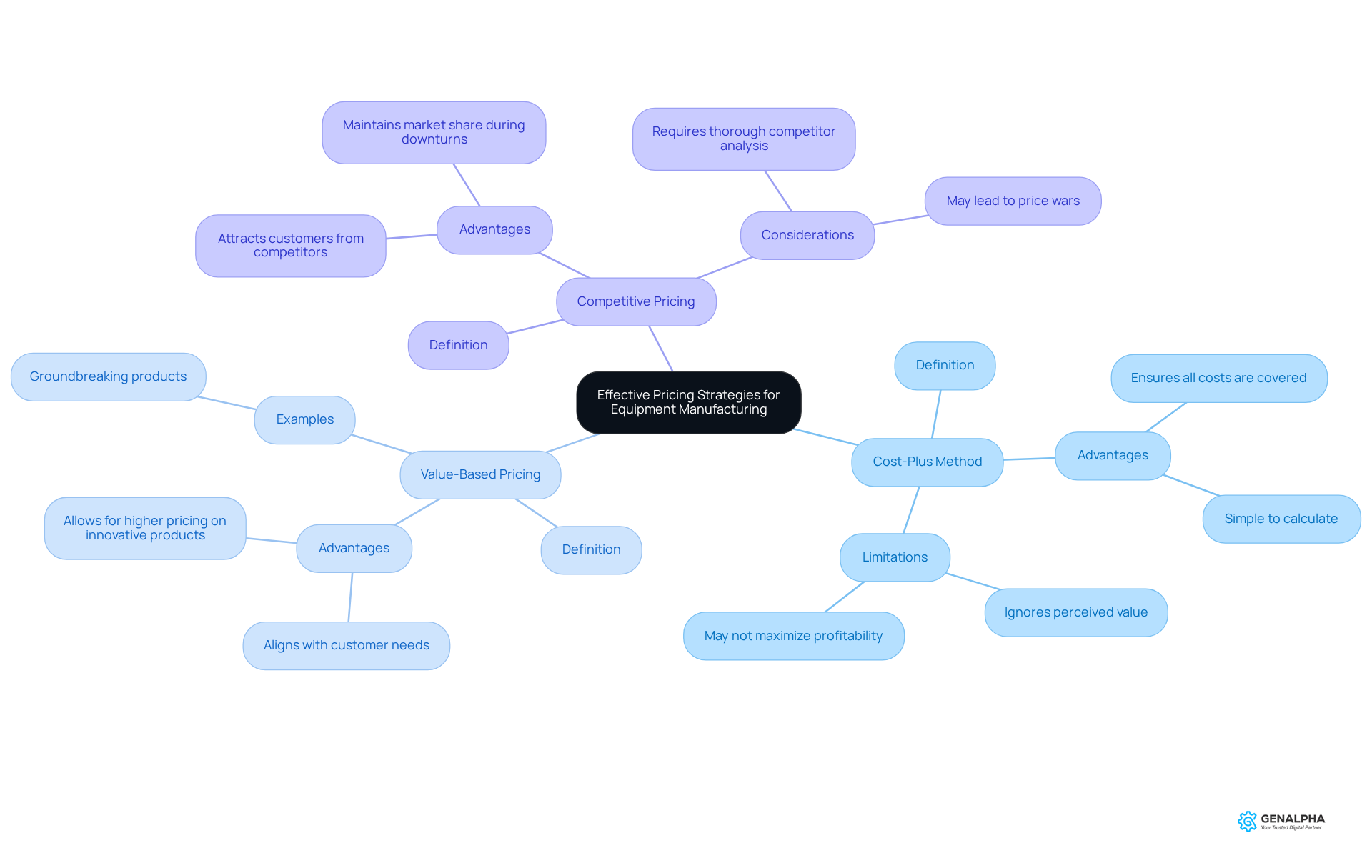
Analyze Cost Structures to Inform Pricing Decisions
To effectively analyze cost structures, producers must categorize expenses into . Fixed costs—such as rent, salaries, and machinery expenses—remain constant regardless of production levels, while variable costs, including raw materials and direct labor, fluctuate with production volume. Comprehending these differences is essential for establishing costs that not only cover expenses but also attain desired profit margins.
For instance, if a producer incurs significant fixed expenses due to costly equipment, they may need to modify their approach to costs accordingly. This could involve setting higher prices or increasing production volume to distribute these costs over a larger number of units, thereby reducing the per-unit cost. A practical illustration of this is seen in XYZ Engineering Ltd., which calculated a unit cost of £20 per unit based on their total fixed and variable costs.
Employing instruments such as Activity-Based Costing (ABC) can offer a greater understanding of resource usage, allowing producers to assign expenses more precisely and improve their strategies pricing. Additionally, understanding the break-even point—calculated as Fixed Costs divided by the difference between Selling Price and Variable Cost per Unit—is essential for determining how many units must be sold to cover all costs. By regularly monitoring metrics such as unit cost, Cost of Goods Sold (COGS), and Return on Investment (ROI), producers can pinpoint opportunities for potential savings and improve overall profitability. It is crucial to avoid common pitfalls, such as misclassifying costs, which can lead to inaccurate analysis and poor decision-making.
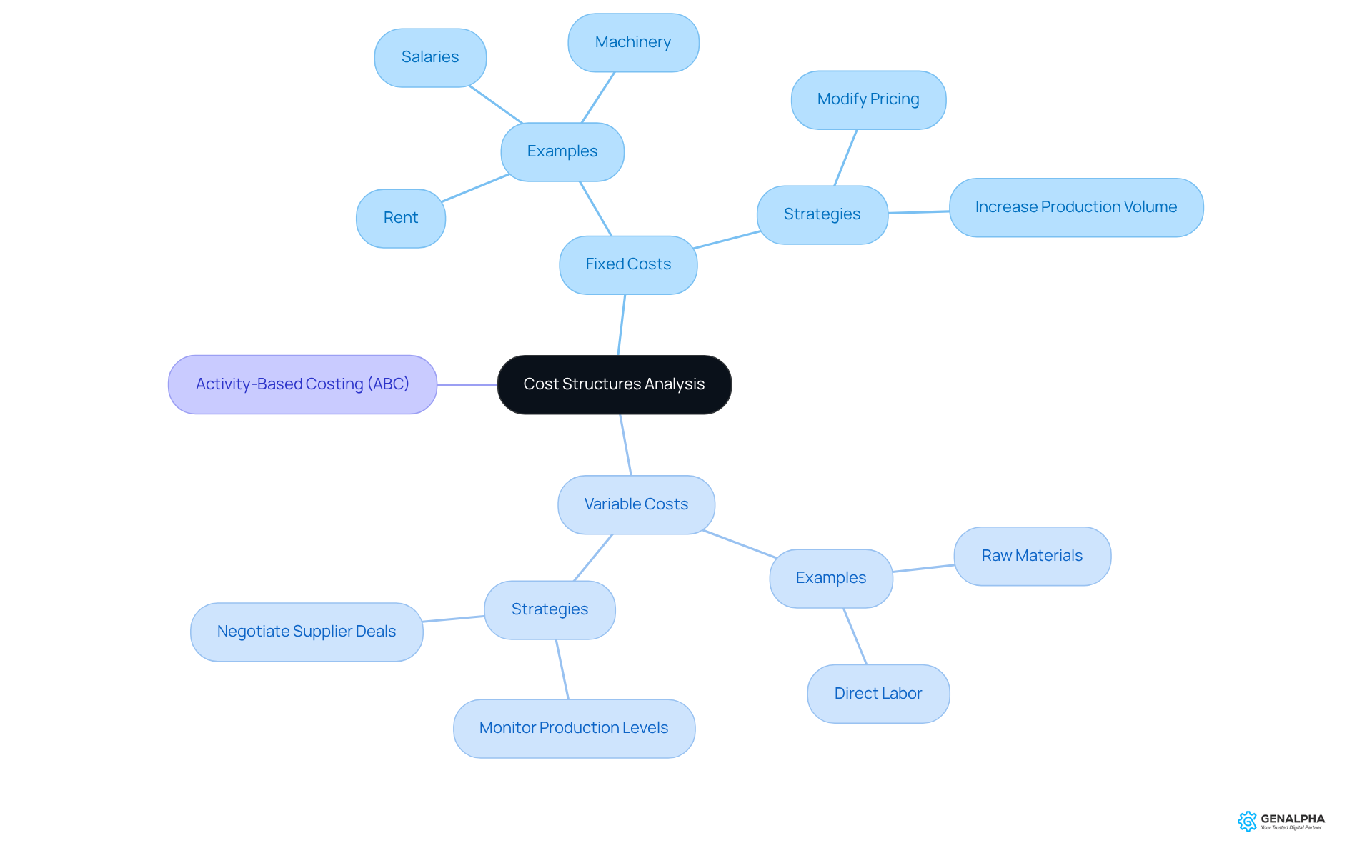
Conduct Competitor Pricing Analysis to Enhance Market Position
Conducting a comprehensive competitor cost evaluation is essential for equipment producers striving to enhance their market position. This process involves collecting data on competitors' cost strategies, product offerings, and overall market stance. Utilizing , such as Price2Spy or Competera, enables producers to track competitors' pricing over time, providing valuable insights into cost trends and market opportunities.
For instance, if a competitor significantly reduces their prices, it may prompt a producer to reassess their own strategy to maintain competitiveness. Conversely, if rivals are raising their prices, this could indicate a market shift that permits a potential price increase without jeopardizing customer retention. Regularly analyzing competitor costs not only helps producers stay agile in response to market fluctuations but also informs strategies pricing that can lead to increased profitability.
In this analysis, tools for monitoring competitor pricing strategies are indispensable. They allow producers to benchmark their costs against industry standards and identify opportunities for differentiation. As Josh Howarth, Co-Founder & CTO, emphasizes, "Understanding which brands compete with you in the marketplace is critical." By leveraging these insights, producers can develop effective strategies pricing for market positioning that resonate with customer expectations and bolster their competitive edge. Additionally, it is vital to recognize common pitfalls in competitor cost analysis, such as overreacting to competitors' changes without considering overall market conditions. By avoiding these missteps, producers can ensure a more effective cost strategy.
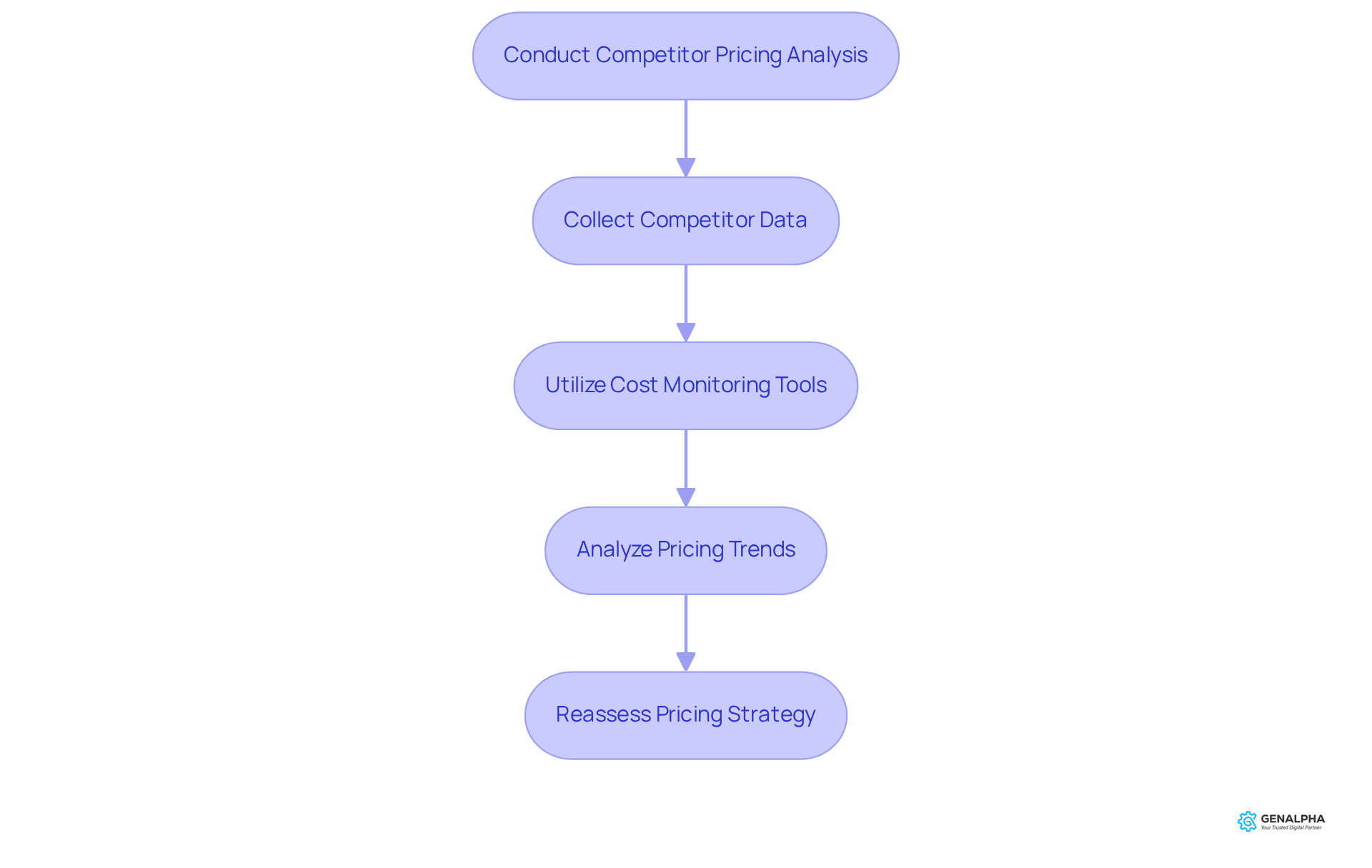
Implement Dynamic Pricing Strategies for Market Responsiveness
Dynamic cost adjustment is a pivotal strategy for pricing for equipment producers, enabling them to adapt based on real-time data, including demand fluctuations, competitor pricing, and market trends. By harnessing advanced analytics and AI tools, producers can implement efficient pricing strategies that allow for swift responses to evolving market conditions. Industry insights reveal that adopting dynamic cost adjustments can yield a revenue increase of 2-5% in the first year, alongside a 15% enhancement in margins during volatile market periods.
For instance, during peak demand phases, a manufacturer may raise prices to leverage increased interest, while providing discounts during slower sales periods to encourage customer engagement. This dual approach not only but also aids in effective inventory management. Prominent companies like Amazon have successfully adopted dynamic pricing strategies, reportedly boosting their revenue by 25%. Such methodologies not only elevate sales performance but also cultivate a responsive and agile business model, crucial for success in today's competitive environment.
As Eric Carrasquilla, CEO of Vendavo, aptly states, "Remaining stagnant is no longer a choice for producers and distributors that aim for profitable expansion in the upcoming year." Strategic and well-executed cost management emerges as a vital business lever, aiding organizations in navigating market shifts, managing risk, and satisfying customer demands. However, manufacturers must remain vigilant of the common pitfalls associated with dynamic cost pricing strategies, particularly the necessity for transparency to avoid alienating customers. Furthermore, interdepartmental collaboration is essential for the effective execution of pricing strategies, impacting various domains including sales, marketing, and IT.
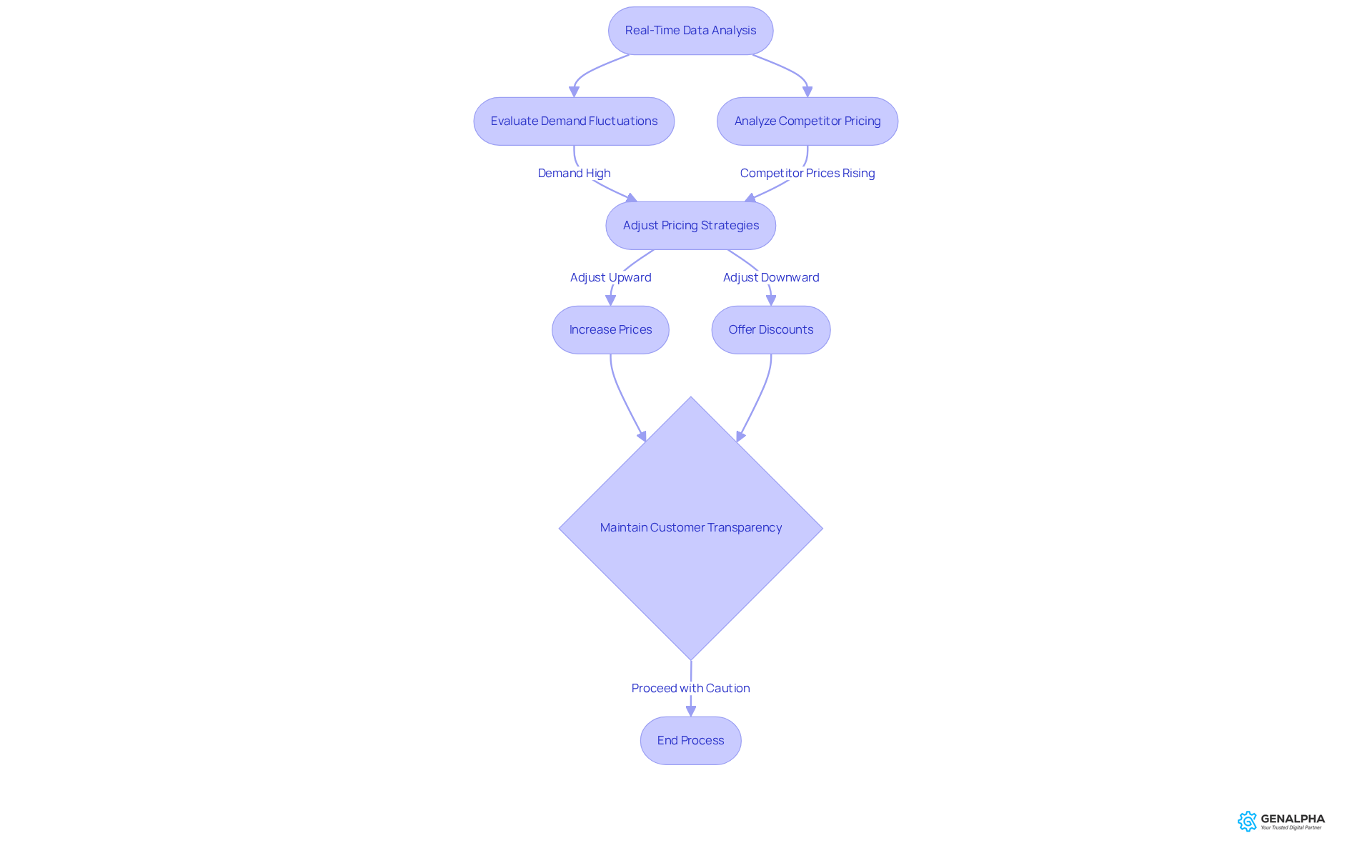
Utilize Psychological Pricing to Influence Customer Behavior
Psychological cost-setting represents a powerful strategy that involves strategies pricing to cultivate a favorable perception among consumers. For example, pricing a product at $99.99 instead of $100 can significantly elevate its perceived value and affordability. Techniques such as charm pricing, where prices end in .99, and price anchoring, which showcases a higher-priced item alongside a lower-priced alternative, are particularly effective in this realm.
Imagine a scenario where a manufacturer presents a premium product priced at $199.99 next to a standard version at $149.99. This arrangement not only renders the standard version more appealing but also encourages consumers to view it as a superior deal. Research indicates that charm pricing can boost sales volume and gross margin, enhancing conversion rates by up to 24% compared to rounded figures.
Furthermore, as Martin Boyle aptly states, "Buyers don't need more time to think, they need a compelling reason to act now." This sense of urgency can be effectively cultivated through strategies pricing that leverage psychological insights. However, manufacturers must also consider ethical pricing practices; transparency in charges is vital to maintain consumer trust and avoid adverse reactions. While psychological tactics can heighten customer satisfaction and elevate conversion rates, it is crucial to remain vigilant about potential risks, such as if these strategies are perceived as deceptive.
By strategically leveraging strategies pricing, including the decoy effect to steer consumer choices, manufacturers can enhance customer satisfaction and drive higher conversion rates, ultimately leading to increased profitability in the competitive equipment sales market.
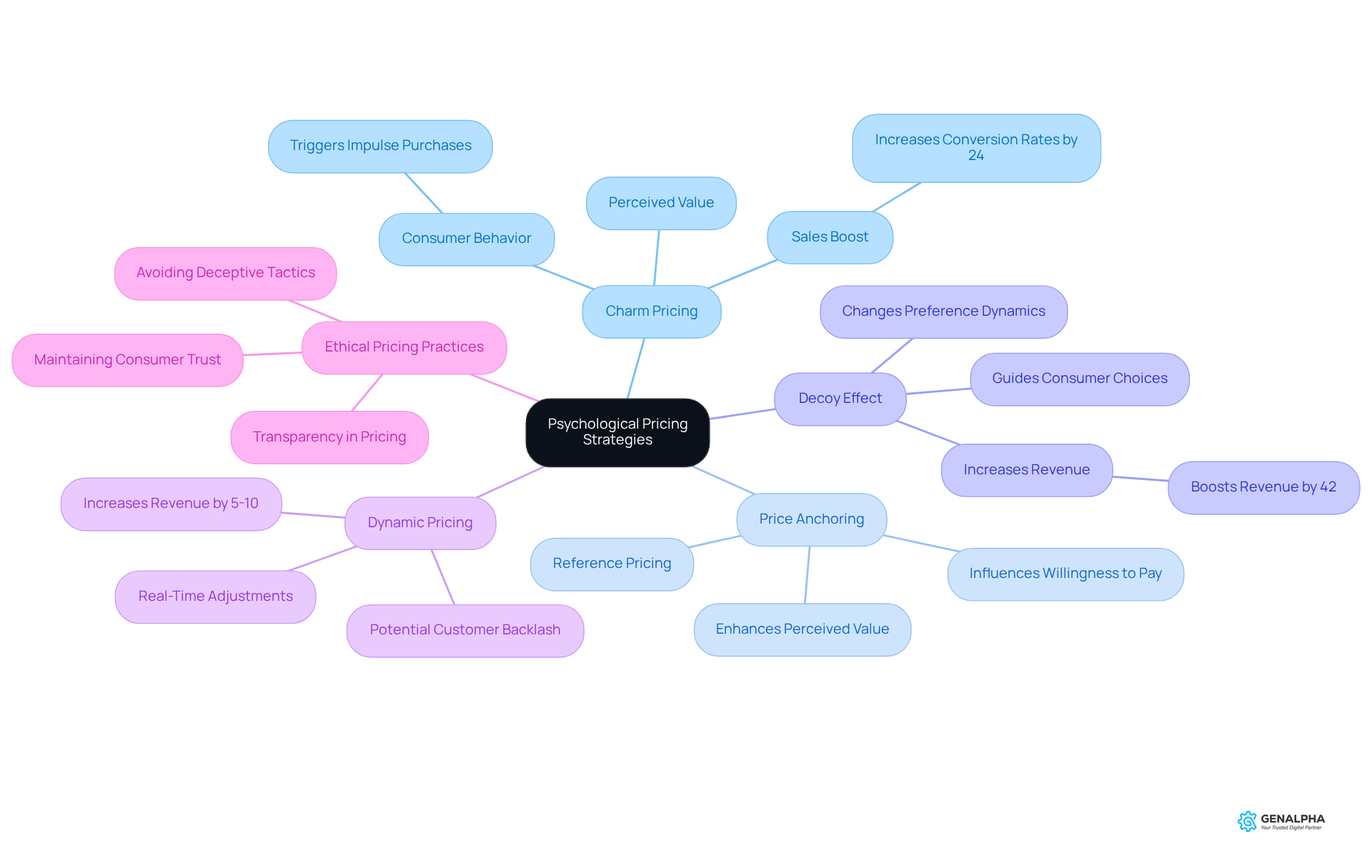
Conclusion
Effective pricing strategies are essential for equipment manufacturers striving to enhance profitability in a competitive landscape. By grasping the nuances of various pricing methodologies—such as cost-plus, value-based, and competitive pricing—manufacturers can align their pricing with customer expectations and market demands. This alignment not only guarantees the coverage of production costs but also maximizes revenue through strategic positioning and responsiveness to market fluctuations.
The article underscores several pivotal tactics, including:
- The necessity of analyzing cost structures
- Conducting competitor pricing analysis
- Implementing dynamic pricing
- Employing psychological pricing strategies
Each of these approaches presents distinct advantages, facilitating informed decision-making based on fixed and variable costs while leveraging consumer behavior insights to drive sales. By integrating these strategies, manufacturers can construct a comprehensive pricing framework that addresses immediate financial objectives while fostering long-term customer loyalty and market presence.
In conclusion, the importance of adopting and refining effective pricing strategies cannot be overstated. As the equipment manufacturing landscape continues to evolve, manufacturers must remain agile and innovative in their pricing methodologies. Embracing these strategies not only positions businesses for enhanced profitability but also empowers them to adeptly respond to shifting market conditions and customer preferences. The time to act is now—manufacturers should take proactive measures to evaluate and enhance their pricing strategies, ensuring they remain competitive and profitable in the years ahead.
Frequently Asked Questions
What are effective pricing strategies for equipment manufacturing?
Effective pricing strategies in equipment manufacturing include cost-plus methods, value-based approaches, and competitive techniques. These strategies help optimize profitability by considering production costs, perceived product value, and market competition.
What is the cost-plus method of pricing?
The cost-plus method calculates total production costs and adds a markup for profit. This ensures all expenses are covered but may not fully account for the perceived value of the product from the customer's perspective.
How does value-based pricing work?
Value-based pricing allows producers to set rates based on the unique advantages and characteristics of their products. This approach enables higher pricing for innovative solutions that meet customer needs.
Why is competitor analysis important in pricing strategies?
Analyzing competitors' cost structures helps producers effectively position their products in the market, particularly in price-sensitive environments where attracting customers from competitors is essential.
What role does competitive pricing play during economic downturns?
During economic downturns or intense competition, producers may adopt competitive pricing to maintain market share and customer loyalty.
How can eCommerce platforms enhance pricing strategies?
Integrating an eCommerce platform provides insights into consumer behavior and purchasing trends, facilitating informed financial decisions and supporting new pricing structures.
What is customer segmentation in pricing strategies?
Segmenting customers based on behavioral characteristics allows manufacturers to tailor their pricing approaches to diverse customer needs, enhancing loyalty and profitability.
Why is it important to evaluate expenses regularly?
Regular evaluations of expenses, including raw materials and labor, are crucial for maintaining accurate costs and establishing effective pricing strategies aligned with customer expectations.
What are fixed and variable costs?
Fixed costs remain constant regardless of production levels (e.g., rent, salaries), while variable costs fluctuate with production volume (e.g., raw materials, direct labor). Understanding these differences is essential for pricing decisions.
How can Activity-Based Costing (ABC) improve pricing strategies?
Activity-Based Costing allows producers to gain a better understanding of resource usage by assigning expenses more precisely, which can improve pricing strategies and profitability.
What is the break-even point, and why is it important?
The break-even point is calculated by dividing fixed costs by the difference between selling price and variable cost per unit. It indicates how many units must be sold to cover all costs, which is essential for pricing decisions.
What common pitfalls should producers avoid in cost analysis?
Producers should avoid misclassifying costs, as this can lead to inaccurate analysis and poor decision-making regarding pricing strategies.




